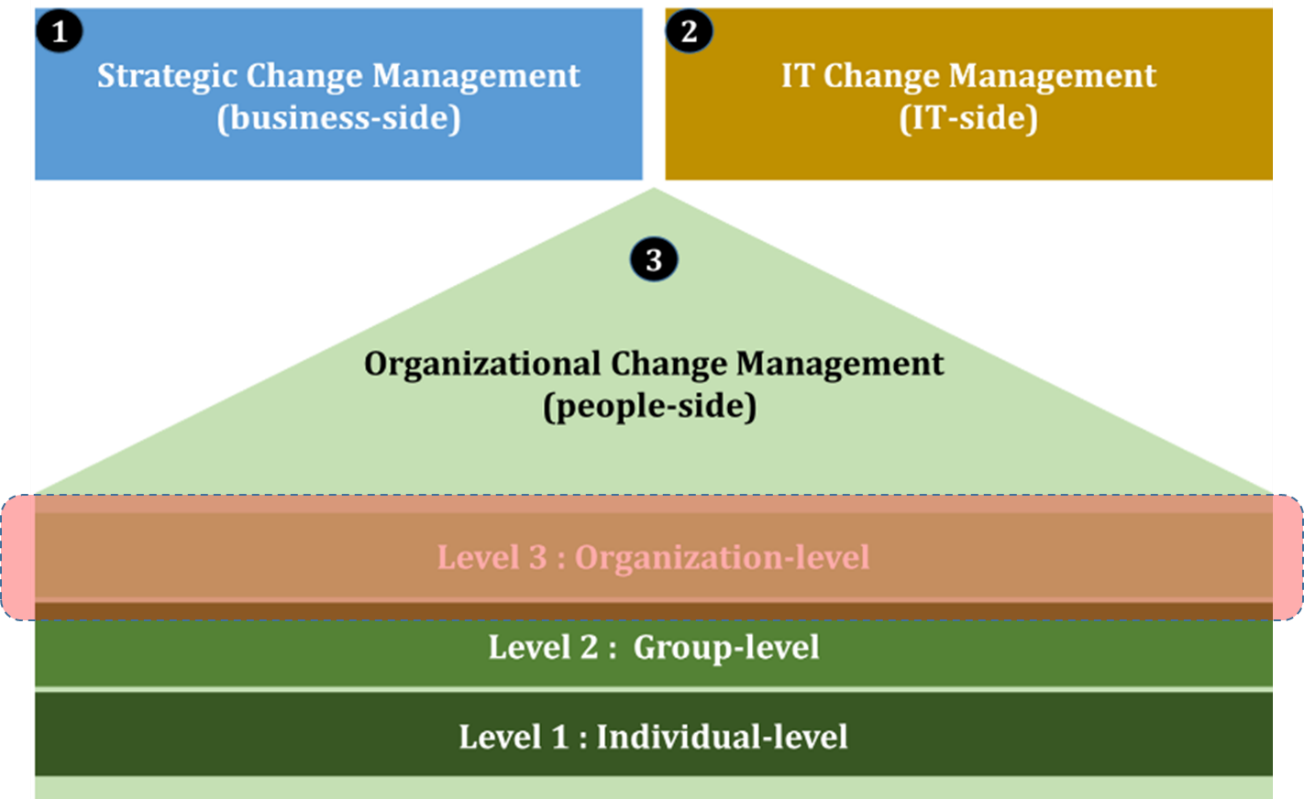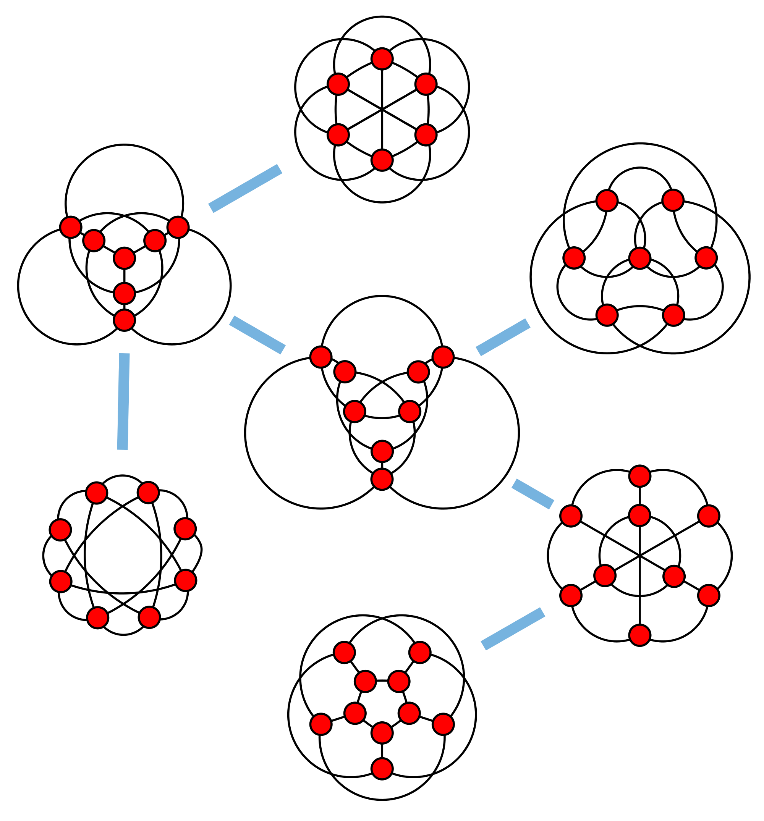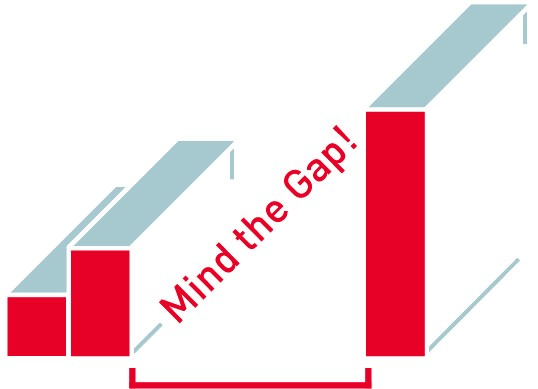Let us admit it. On occasions, performing business analysis at organizational level is a sort of wielding a wild behemoth.
Whether the change is business-driven (business process improvement, restructuring, M&A, cultural change, downsizing, etc.), IT-driven (ERP implementation or upgrade, digital transformation, data-driven decision-making, etc.) or an intricate mesh-mash of both, encountering a whole organization, with all of its hard and soft elements, can be an overwhelming engagement, even for the bravest business analysts.
Honestly, and in most cases, the technical part of our work (e.g. requirements engineering, modeling, etc.) is squeezed harshly into an already tight project schedule, depriving us from any time cushion to concern ourselves with the people-side of the change. Still, there are some practices that can practically make our life much easier if we adopt them early in the project.
This fourth article of the series “ Business Analysts and Change Management - What we need to know” addresses the minimum that we - as Business Analysts - might need to know about change management, but this time at organizational level. To know more about change management at the individual level and at group level, please check out:

The below "basic steps" are intended to be eye-openers for business analysts (i.e. BA), although I cannot claim that they are exhaustive list. The foremost goal of this post is to incorporate some change management practices into your wok, especially if you are short of time.
1) Adopt the Right Mindset

Evidently, most of our plans, projects approaches, methodologies (such as project management methodologies, business analysis methodologies, enterprise architecture methodologies, etc.) are based on an extremely flawed assumption, which is "Organization is a machine". The main reason behind the prevalence of this oversimplified metaphor is that it gives us a sense of control over any change. After all, machines are very predictable and controllable in comparison with organizations full with Homo sapiens, along with all their biases, passions, preferences, and of course "political agendas".
Although the machine metaphor can be helpful in some types or phases of change (e.g. inherently technical change), it remains extremely limited and shortsighted. Therefore, it is fundamental to have the habit of enriching our thinking about “How organizations work” with new perspectives. Esther Cameron and Mike Green recommended these metaphors (originally suggested by Gareth Morgan in his bestseller "Images of Organization"):
- Organization as a political system. This metaphor recognizes the important role that power plays, competing interests, and conflict have in organizational life. The major concepts are office politics, building support and coalitions, understating organizational power, political maps, conflicts management, winners and losers.
- Organization as an organism. The organization as a living, adaptive system. The key concepts here are environment, adaptability, flow of information, organizational health, fitness, responsiveness.
- Organization as a transformation. It views organization as an entity amid an ocean of complexity, chaos and paradox. The essential concepts here are order out of chaos, self-organization, the importance of tension and conflict, emergence, and the low importance of management vs. the high importance of enablement.
Based on your personality and experience, you might find one or more metaphors more appealing for you. Nonetheless, always remember the perils of adopting one-dimensional insular view.
2) Know Your Role & Expectations

Intelligently enough, the business analysis expert "Steven Blais" summarized the role of IT business analyst as one or combination of these primary roles: Intermediary (a go-between among the business, IT, and upper level management), Filter (receiving and evaluating change requests), Investigator ( eliciting information to determine the problem and solution), Facilitator (helping to understand problems and work together to solve them), Diplomat (assists in the resolution of conflict among the parties and negotiates collaborative solutions), Business Process Improver (improve business processes),Quality Assurance ( the solution solves the problem completely and effectively, Change Agent (to make sure the solution is accepted by stakeholders throughout and post the implementation).
In addition to above-mentioned roles, the business analyst need to know why she has been hired in terms of sphere of influence in order to set her expectations early on. Failing to do so is a main source of disappointment throughout the project. There are three roles that a BA can assume in this sense (as suggested by Peter Block in his book “Flawless Consulting”):
- The Expert: the BA is a consultant who has directive role, as he might have direct or indirect influence on the decision-making process. The BA would be the key person is solving the problems, and the client might hide behind him.
- The Extra Pair of Hand: the client would have the full control. The role of the BA here is very passive as her role would be to implement pre-defined plans (e.g. order taking). It is compliant role.
- The Collaborative role: the BA would work in interdependent fashion, where she might not have direct authority, yet she would share responsibility with the client. However, this ambiguous accountability can be a pitfall for many control issues. Nevertheless, some authors denote that “this is the most appropriate role for IT people to take with clients in today’s complex organizations.”
Besides, the BA must mindfully think about the stage of the change that she is working at, as her responsibilities would vary depending on the phase. Generally speaking, any change -no matter how huge or small- would go through these stages:
- Change Planning: In this stage, the focus of the BA is on utilizing his Assessment skills, techniques, and tools. It is primarily about facts-finding and profound analysis. This phase can be viewed as the Unfreeze stage of Lewin Model, where the BA might need to be aware of his client learning anxiety and survival anxiety (as explained in the second article of this series). The BA can participate in defining the Vision of the change in this phase, thus "Envisioning" or “pathfinding” is another significant skill that he might need to use.
- Change Execution: the tagline here is "Facilitation". The role of the BA as a facilitator in this phase is crucial. Among the cacophony of chaos, turbulence, and anxiety, the BA can be the voice of reason and compassion for the people affected by the change (particularly those who will genuinely be harmed by it). Furthermore, facilitating the learning process would be a key activity, even on a trial-and-error basis.
- Change Sustainability: The refreezing. The best thing that the BA can do in this phase in establishing highly accessible and visible Feedback Loops. Think about scorecards, dashboards, alerts, and other mechanisms that internalize the change and make it more visible and transparent.
So, the next time you are involved in a project, ask yourself: what is my “real” BA Role, what is my “real” Type of Engagement, at which Stage of change I am working at.
3) Check the Pulse of the Corporate Culture

Unfortunately, the BA would rarely have the luxury to conduct a full cultural assessment related to her work. However, there is a few signs that might indicate the overall culture of client organizations. I think that the hallmark of any corporate culture is "information sharing". That is, how the members of an organization share information is expressively indicative signal for its culture. Ask yourself: what are the information-sharing habits? Is it a political and power game? Is it unnecessarily complicated? What are the primary medium of communication? Is there clear information flow lines between departments and systems? Is the information siloed in such a way to reflect the functional silos, and the ensuing turf wars?
4) Check the Feasibility of the Change

If you want to suggest a new policy, or change business process, is not more reasonable to check the practicality of this change in its real daily context? If you agree, then the next question that naturally follows is “How?”
Irrespective of technical minutia of any change, there is a common formula that can assist you heavily in answering this question: Beckhard and Harris' Change Equation. Before you propose the change, validate the parameters of this formula. If any one factor is zero or near zero, the change (the product) will also be zero or near zero, and cost of the change would be higher than the benefit.
C = (A × B × D) > X
C = the change.
A = Level of dissatisfaction with the status quo.
B = Desirability of the change or end state. Do we have a clear vision of what things will be like after the change?
D = Practicality of the change. Is it executable?
X= Cost of the Change.
5) Plan for Execution Gaps

Stephen Covey nailed it down aptly when he referred to the so-called "The Great Execution Gap" by saying “To know and not to do is really not to know”. Covey opened our eyes to the factors that affect execution, where he said in his seminal book "The 8th Habit":
[The] breakdowns in execution typically occur as failures in one or more of these six drivers. We call them execution gaps:
Clarity—people don’t clearly know what the goals or priorities of their team or organization are;
Commitment—people don’t buy into the goals;
Translation—people don’t know what they individually need to do to help the team or organization achieve its goals;
Enabling—people don’t have the proper structure, systems or freedom to do their jobs well;
Synergy—people don’t get along or work together well; and
Accountability—people don’t regularly hold each other accountable.
How to tackle each one of these drivers is huge topic that cannot be covered in one article, and can be a food for thought for future articles 😊.
So, to wrap up:
Do not get panicked when you face a huge change initiative, and at least think about these steps in a deliberate and conscious way:
- The Question of Mindset. Is my mindset hinges on multi-dimensional view about the nature of organizations? That is an organization is not merely a machine, but an amalgam of mechanical parts, political games, adaptive organisms, and never-ending flux.
- The Question of Role. What is my BA role(s), what is my sphere of influence, and at which stage of change I am working at?
- The Question of Culture. At least, can I analyze and judge the information-sharing habits?
- The Question of Feasibility. How to analyze the feasibility of a change by means of factoring in: Dissatisfaction x Desirability x Practicality.
- The Question of Execution. Did I consider the six core execution gaps that might make or break the whole change: clarity, commitment, translation, enabling, synergy, and accountability?
I do not intend in this article to provide formulistic solutions, however I hope to find these steps helpful in your daily work.
Have a happy paralysis-free analysis 😊
 |
Author: Zaher Alhaj, Digital Transformation Consultant
Zaher is Australia-based consultant who is specialized in digitally transforming and empowering organizations through applying unconventional multi-disciplinary approaches of Business Analysis, Business Architecture, Business Analytics, Data Management, Change Management, Enterprise Architecture, and Innovation techniques.
|
Zaher is Certified Business Analysis Professional (CBAP®); TOGAF® 9 Certified; Prosci Change Management Certified; Certified Business Intelligence Professional (CBIP®), Governance and Stewardship Professional (DGSP), Certified Executive Data Science, Kimball-Certified DW/BI Specialist.
References
Esther Cameron, Mike Green. “Making Sense of Change Management: A Complete Guide to the Models, Tools and Techniques of Organizational Change”. Kogan Page; Third Edition (June 15, 2012).
Stephen R. Covey. “The 8th Habit: From Effectiveness to Greatness”. Free Press; Reprint edition (November 29, 2005).
Steven Blais. “Business Analysis: Best Practices for Success”. Wiley; 1 edition (November 8, 2011).